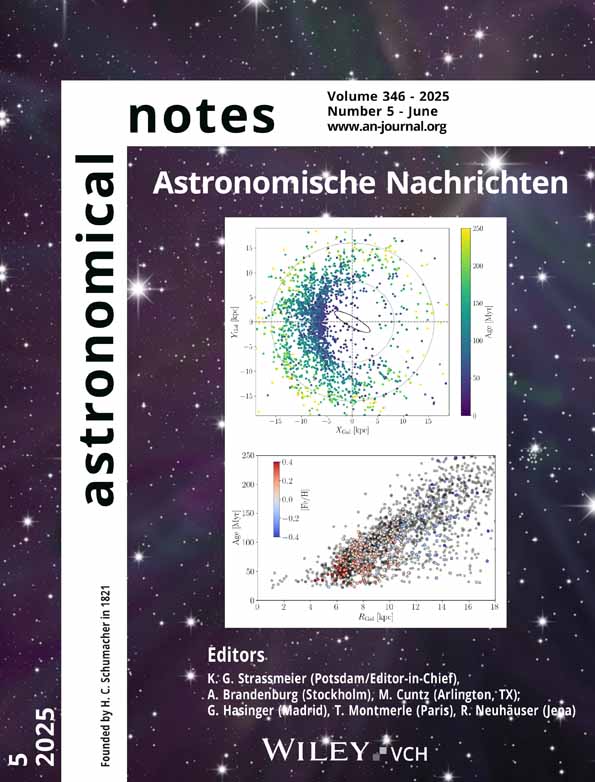Modelling the broad-band spectra of X-ray emitting GPS galaxies
Abstract
The study of the broad-band emission of GHz-Peaked-Spectrum (GPS) radio galaxies is a powerful tool to investigate the physical processes taking place in the central, kpc-sized region of their active hosts, where the jets propagate and the lobes expand, interacting with the surrounding interstellar medium (ISM). We recently developed a new dynamical-radiative model to describe the evolution of the GPS phenomenon (Stawarz et al. 2008): as the relativistic jets propagate through the ISM, gradually engulfing narrow-line emitting gas clouds along their way, the electron population of the expanding lobes evolves, emitting synchrotron light, as well as inverse-Compton radiation via up-scattering of the photon fields from the host galaxy and its active nucleus. The model, which successfully reproduces the key features of the GPS radio sources as a class, provides a description of the evolution of their spectral energy distribution (SED) with the lobes' expansion, predicting significant and complex X-ray to γ -ray emission.We apply here the model to the broad-band SED's of a sample of known, X-ray emitting GPS galaxies, and show that (i) the free-free absorption mechanism enables us to reproduce the radio continuum at frequencies below the turnover; (ii) the lobes' non-thermal, inverse-Compton emission can account for the observed X-ray spectra, providing a viable alternative to the thermal, accretion-dominated scenario. We also show that, in our sample, the relationship between the X-ray and radio hydrogen column densities, NH and NHI, is suggestive of a positive correlation, which, if confirmed, would support the scenario of high-energy emitting lobes (© 2009 WILEY-VCH Verlag GmbH & Co. KGaA, Weinheim)




